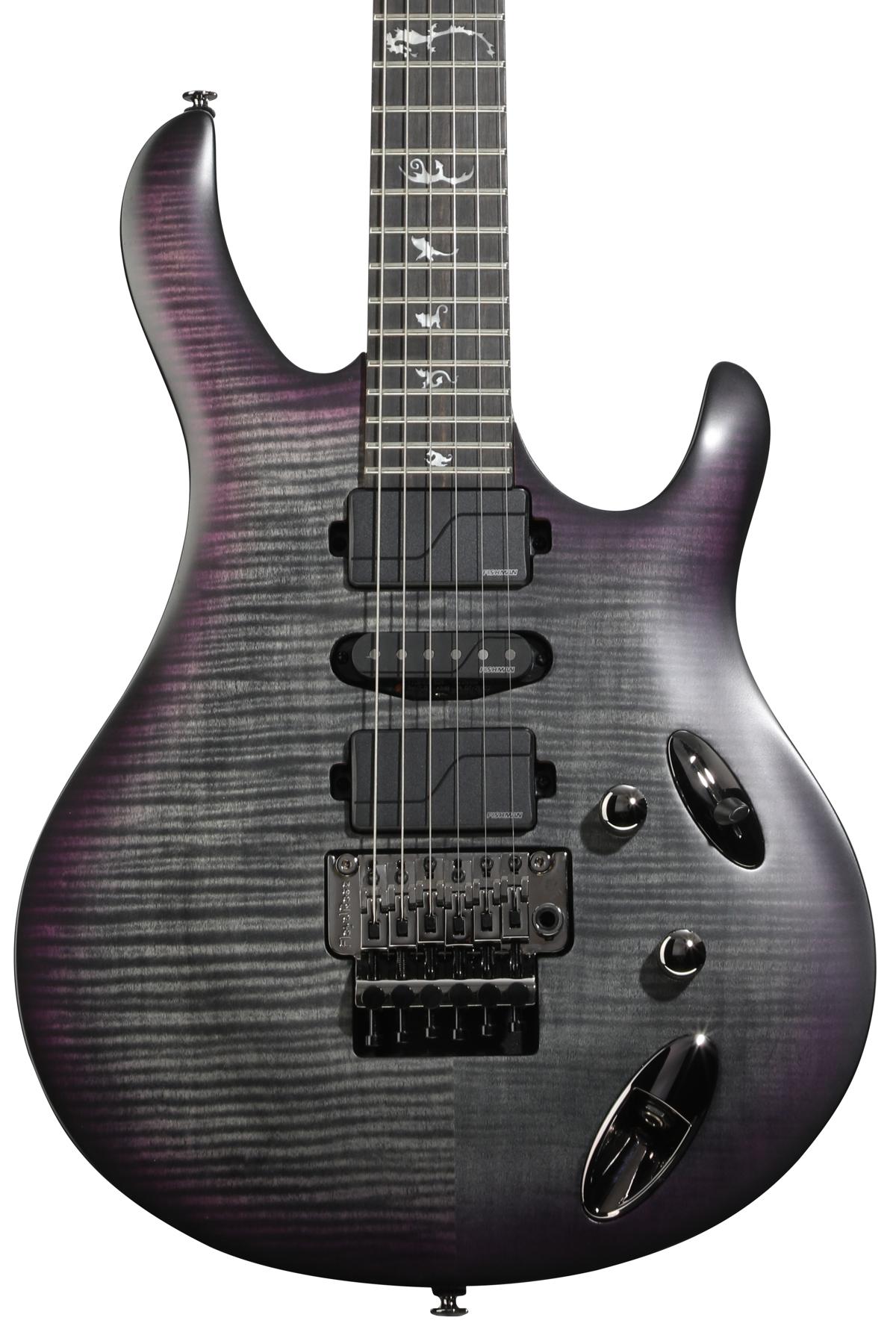Michael Tobias made his mark with high-end basses in the ’70s. As with many of the era’s best small luthiers, the popularity of his instruments outstripped his ability to build them. Tobias sold his company to Gibson on the first day of 1990, hoping the giant would grow the brand and boost production. But about three years later, Tobias left the company.
These days Tobias runs MTD (Michael Tobias Design). While he’s still best known among bassists, he’s drawing on his experience as a luthier and a picker to design guitars too. The Kingston Rubicon, MTD’s first guitar, is available a 22-fret model with a fixed bridge (reviewed here) or a 24-fret, tremolo-equipped model. It’s a thoughtfully designed guitar that emphasizes playability and functionality.
Money Well Spent
MTD’s Kingston series offers Tobias’s design touch and quality workmanship at an accessible price. (Most of the cost savings come from making the Kingston Rubicon 6–22 in China, though instruments are set up in States.) The craftsmanship is generally very good—the only noticeable issues on the test model were a little excess glue around the nut, and a loose truss rod cover that was cut a little too long.
The Kingston includes the Buzz Feiten Tuning System, which uses a compensated nut to improve intonation, particularly at the first three frets. The system, typically associated with upscale offerings from the likes Tom Anderson and Suhr, makes the MTD pleasurable and satisfying to play, especially when experimenting with different chord voicings, which ring true and in tune regardless of position. The only bummer is that the 6-22’s tuners seem to perform less well than the Buzz Feiten system. I had to re-tune a little more than I would have liked.
Rapid Rubicon
With a matte-finished, transparent red, flame maple cap on its alder body, the MTD has an attractive, modern-day, shredder vibe—tasteful and not too radical. The visual contrast between the dark body and light-colored maple neck is strong, but it works well. I wouldn’t object too a less-busy headstock, though the unorthodox shape ensures straight string-pull to the tuners. The MTD logo and Kingston Rubicon engraving on the truss rod cover are fine, but the “Michael Tobias Design” tag (plus multiple fonts and text sizes) make things look cluttered.
Seductive Sounds
Regardless of how you view its looks, this axe plays like a beast. The 25.5" scale, asymmetric carve (fatter on the bass side and thinner on the treble) and compound-radius fretboard add up to one of the most comfortable and fastest necks I’ve come across. It feels just right from the first fret to the upper reaches of the neck. I played for hours with no fatigue.
Ratings
Pros:
Excellent sounds and a broad tonal range. Stellar intonation.
Cons:
Could use better tuners.
Tones:
Playability:
Build/Design:
Value:
Street:
$799
MTD Kingston Rubicon 6–22
mtdkingston.com
The guitar’s electronics consist of a pair of MTD humbuckers with a three-way selector switch, plus individual series/parallel toggle switches positioned below the bridge. I tested the guitar through a Mesa/Boogie Blue Angel amp and various effects boxes (Mesa/Boogie V-Twin, Pro Co Rat, Mad Professor Golden Cello) and got fabulous results with each.
The Rubicon 6–22’s bridge and neck pickups generate vibrant if slightly compressed tones with ample sustain, and the available voices easily cover pop, rock, or fusion styles. Without outboard effects or a lot of amp gain, the pickups’ civilized personalities are a little too smooth and refined for aggressive, metal-type sounds, though they’re plenty versatile if you like clean tones or use lots of pedals.
The series/parallel wiring expands the Rubicon 6–22’s palette, and is one of the instrument’s real upsides. I’ve got several humbucker-equipped guitars with series/parallel wiring and coil splitting, but few are this rewarding to use. All settings sound organic, with nicely balanced output. The parallel setting provides cool, hollowed-out, quasi-single-coil sounds (though they’re beefier than a true single-coil). I got much mileage out of alternating between parallel and series. For example, switching to parallel gives single-note runs more clarity and bite, lending upper-register bends a visceral, screaming quality that reminds me of Miles Davis-era Mike Stern. Switching to series provides fuller, more vocal tones, with tons of sustain from the neck pickup and Billy Gibbons-like throatiness from the bridge.
While I love the contrasting series/parallel switching, I wish the switches and pots responded to a lighter touch. (I like to operate them with a quick flick of the finger, though some players prefer extra resistance.) But overall, the controls are more convenient than typical push/pull switches, and the layout works well.
The Verdict
At $799, the Kingston Rubicon 6–22 isn’t cheap. But the guitar’s master luthier pedigree, excellent playability, versatile tonal range, and Buzz Feiten Tuning System rival features on guitars costing two or three times the price.








![Rig Rundown: Russian Circles’ Mike Sullivan [2025]](https://www.premierguitar.com/media-library/youtube.jpg?id=62303631&width=1245&height=700&quality=70&coordinates=0%2C0%2C0%2C0)


























